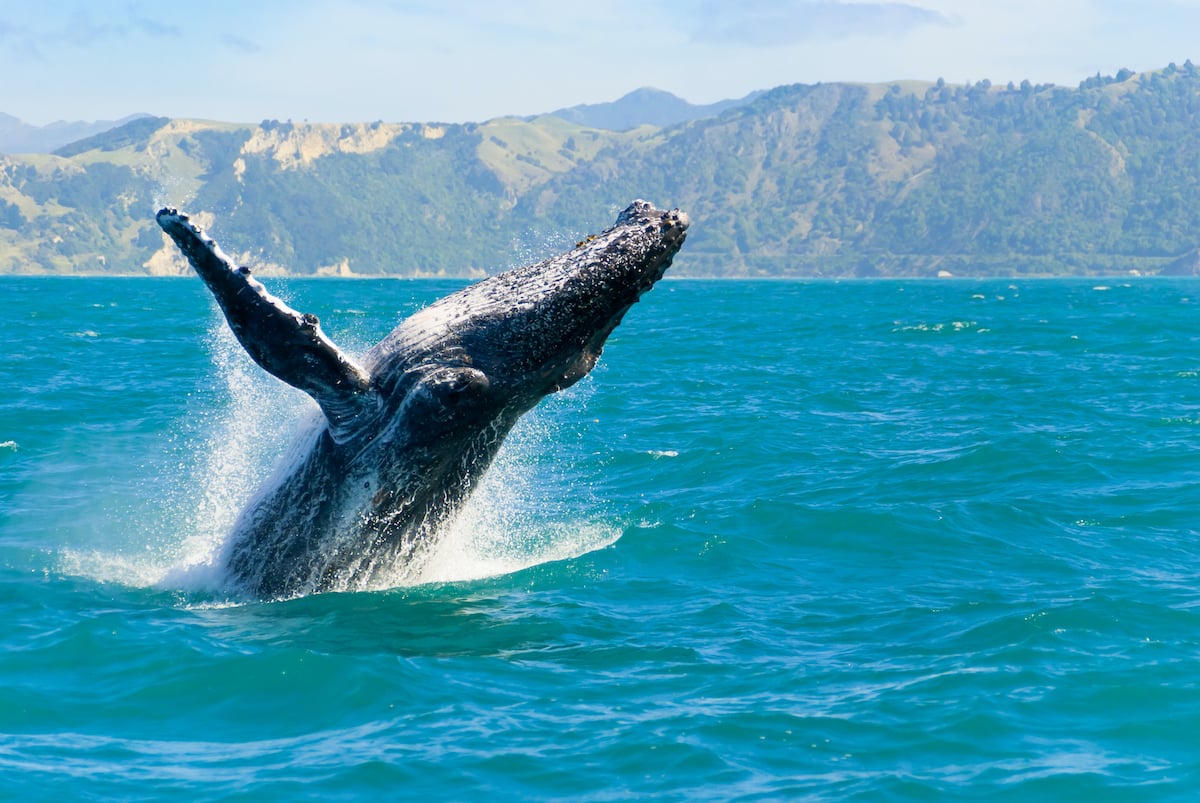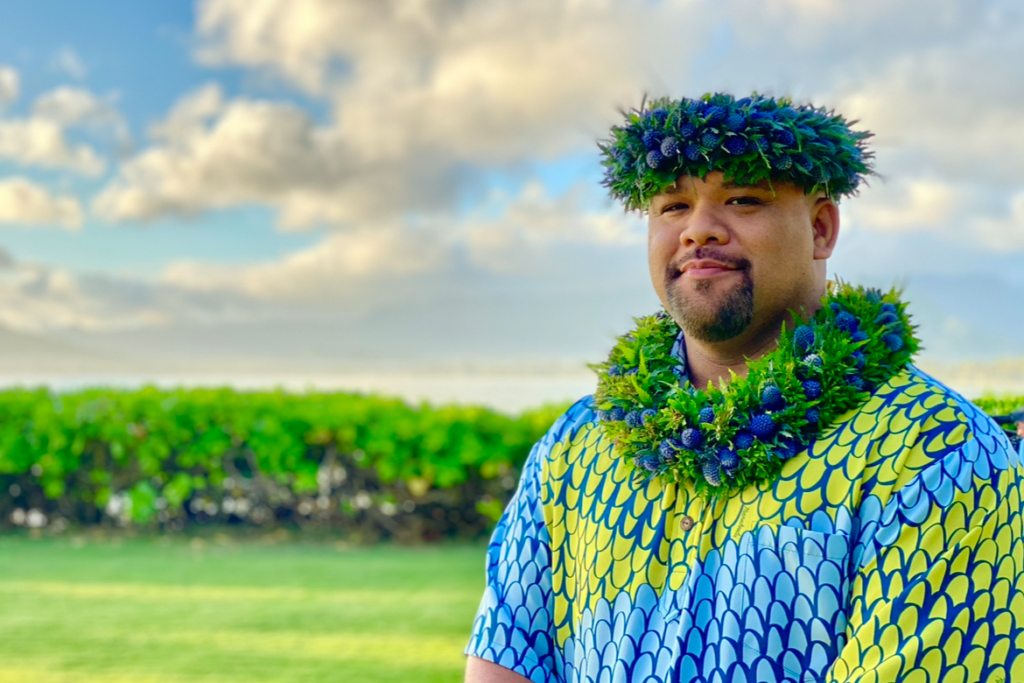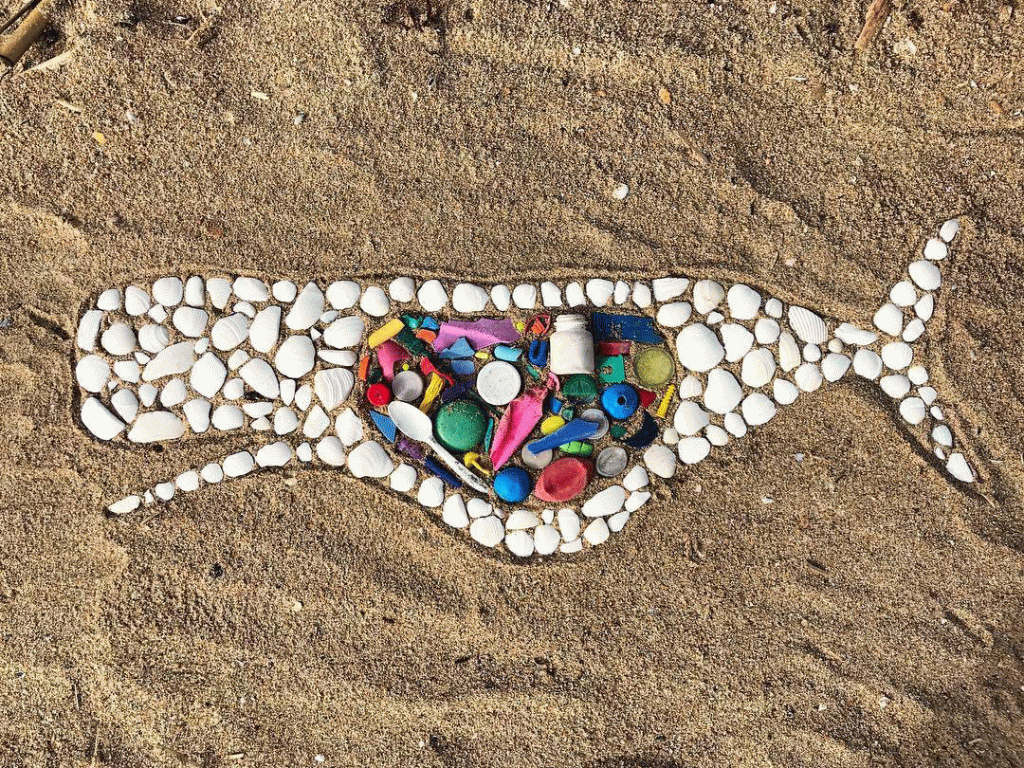A Parent’s Guide to Humpback Whales in Hawai‘i
Learn about the endangered koholā—and maybe spot a few—during Spring Break.

There’s no better time than Spring Break in Hawaiʻi to learn about our favorite island visitor: the humpback whale.
Known as koholā in Hawaiian, these endangered marine mammoths visit the Hawaiian Islands between November and March to mate, birth and frolic in our warm waters. Thousands of them make an epic voyage from Alaska to Hawaiʻi—about 3,000 miles—one of the longest journeys taken by any land or sea animal. And they do it every year!
So far, 2022 has been a very active and eventful humpback whale season, according to the National Oceanic and Atmospheric Administration’s Hawaiian Islands Humpback Whale National Marine Sanctuary. Between 10,000 and 12,000 of these colossal marine mammals travel to the Island every year—and right now is a great time for your and your keiki to view them. (February is usually the peak of whale sightings, but you can still spot them through May.)
SEE ALSO: 🐋 Hawaiʻi is the Only State in the U.S. Where Humpback Whales Go to Have Their Babies
So carve out some time this Spring Break to learn about—and see!—these important and amazing creatures.
What To Know

Humpback whales use their massive tail fins, called flukes, to propel themselves through the water and sometimes completely out of it. Photo: Getty Images
Don’t know much about koholā ? Here are some fun facts compiled by the NOAA and National Geographic:
- Humpback whales have an estimated life span of 40 to 50 years. They can weigh up to 40 tons and grow to 60 feet in length.
- Humpbacks are powerful swimmers and use their massive tail fins, called flukes, to propel themselves through the water and sometimes completely out of it. They also slap the water with their flukes and pectoral fins.
- The North Pacific stock of humpback whales spends the winter in Hawaiʻi, western Mexico and the southern islands of Japan. In the spring and summer, they migrate up to 3,000 miles to feed in colder northern waters in places such as Alaska.
- Humpback whales feed on krill and small schooling fish. Instead of teeth, they have baleen, which are platelike bristles made out of keratin, the same protein that constitutes human hair and fingernails.
- Male humpback whales are known for their songs, which vary based on the time of year, location and purpose.
- Mothers and calves swim close together, often touching each other with their flippers in perceived acts of affection.
Where To Go
On Oʻahu, there are several great spots to catch a glimpse of these gentle giants—and you don’t need to book a whale-watching tour or charter a private boat. The trail leading to the Makapuʻu Lighthouse on the southeastern coast of the island is one of the best, most accessible places to see whales. (Days with lighter tradewinds are the best.) There’s parking—no restrooms, though—and the trail is paved, so you can even push a stroller. Hanauma Bay and the overlook by Lēʻahi (aka Diamond Head) are two other options on the south shore.
Fun Facts About Koholā

Did you know? Adult male humpback whales sing songs that can be heard up to 20 miles away. Photo: Getty Images
Share these fun facts with your kids, courtesy of NOAA’s Hawaiian Islands Humpback Whale National Marine Sanctuary.
- A humpback whale can jump out of the water as high as 18 feet.
- Humpback whales have belly buttons, just like humans.
- An adult humpback whale is as long as a big yellow school bus, about 45 feet.
- Adult male humpback whales sing songs that can be heard up to 20 miles away.
- When in their cold water feeding grounds, a single humpback whale can eat up to 1.5 tons (about 3,000 pounds) of krill every day.
- During migration, a humpback whale can complete a 3,000 mile trip from Alaska to Hawai‘i in approximately 28 days.
- A humpback whale can expand its mouth to hold over 5,000 gallons of sea water.
- An adult humpback whale can weigh more than five adult African elephants.
- The humpback whale evolved from four-legged, even-toed hoofed ancestors that lived on land about 50 million years ago.
- Each fist sized bump, called a tubercle, on a humpback whale’s head contains a single hair.
- Humpback whales have the longest appendage of any animal. One pectoral fin can be more than 15 feet long.
SEE ALSO: 🐳 18 Really Interesting Facts You Didn’t Know About Humpback Whales
Activities For Your Keiki
Download or print these fun activities for your kids from NOAA’s Hawaiian Islands Humpback Whale National Marine Sanctuary.
Humpback Whale Crossword Puzzle
For more resources about humpback whales, visit here.
















